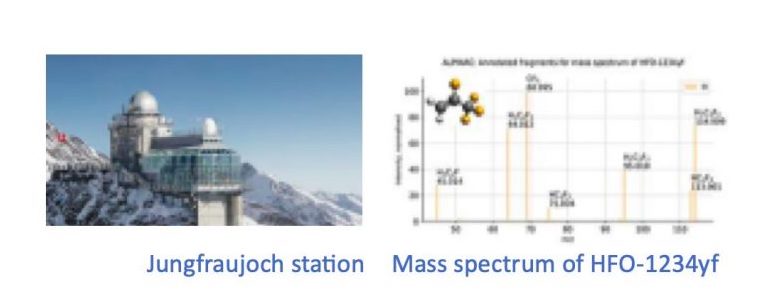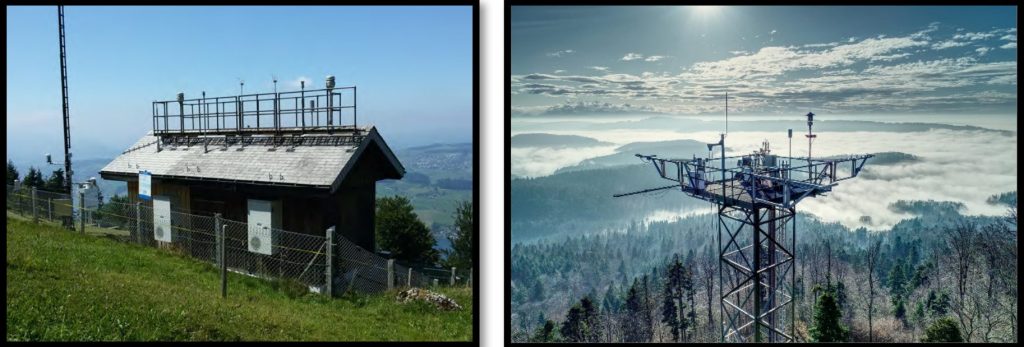Masters or SIE project – Assessment of low cost sensor technologies for spatially-resolved air quality indices in the City of Lausanne

The goal for this project is to evaluate the capability of low cost sensors for estimating particulate and gas-phase pollutant concentrations and to provide the best estimate of air quality affecting residents in Lausanne. The project involves characterization of sensor-specific and environment-specific conditions that lead to variations in sensor response to target pollutants, and build predictive models that take into account these effects. Sensors have been deployed by the Ville de Lausanne, and reference measurements for calibration and validation are provided by Federal and Cantonal monitoring network stations. Finally, air quality indices (AQIs) combining particulate and gas-phase pollutants should be derived and compared against those obtained with reference measurements to assess the quality of AQI predictions.
- Project duration: Fall semester 2023, Masters or SIE project
- Location: Laboratory for Atmospheric Processes and Their Impacts, EPFL
- Supervisor: satoshi.takahama@epfl.ch
Masters project – Molecular Structure Reconstruction

Mass spectrometry is a valuable tool that allows scientists to break down molecules into smaller fragments and determine their structures. While traditional methods involve manually investigating possible arrangements of fragments, modern algorithms are being investigated to automate this process. These algorithms can be divided into two categories: combinatorial-based methods and learning-based methods. Combinatorial-based methods use puzzle-solving approaches, resulting in exponential running times as the problem size increases. Learning-based methods, such as deep learning, utilize large databases and can provide results in a timely manner. However, these methods may lack interpretability, making it difficult to understand how they generate the structure of molecules.
In this master thesis project, we aim to implement and improve upon various algorithms for molecule structure reconstruction. Our focus will be on testing these algorithms using measurements from a tandem chromatogram-mass spectrometer located at Jungfraujoch, operated by the laboratory of climate gases of Empa (Swiss Federal Institute of Material Science and Technology). This instrument measures halogenated compounds, which are small molecules responsible for greenhouse gas emissions and ozone layer depletion. The algorithms developed during this project will be integrated into the laboratory’s existing program for identifying new pollutants. Currently, the program can predict the molecular formula of a compound, and our project aims to expand its capabilities to predict the structure of unknown compounds as well.
• Duration: 6 months during the Fall 2023 semester
• Location: Dübendorf (Empa facilities)
• EPFL supervisor: satoshi.takahama@epfl.ch
• Empa contacts: lionel.constantin@empa.ch, stefan.reimann@empa.ch
• Empa laboratory: https://www.empa.ch/web/s503/climate-gases
Dust in the Wind: Analyzing Mineral Dust Acidification and Its Effects

Aerosol particles are ubiquitous in the atmosphere and have various impacts on the Earth system: they directly affect climate by scattering and absorption of solar radiation and indirectly by acting as cloud condensation nuclei. Because they control clouds’ formation and properties, they are also important for the hydrological cycle. Aerosols can have adverse effects on human health: recent estimates attribute about 4 million of premature death per year to aerosol pollution. On the other hand, these tiny particles supply nutrients (e.g., nitrogen, phosphorus, and iron) essential for numerous ecosystems.
Mineral dust particles contribute to more than half of the global atmospheric aerosol burden and are the most important source of external nutrients to the oceans. However, nutrients are largely insoluble in freshly emitted dust and so not available for ecosystems. The acidification of mineral dust particles is hypothesized to be the main driver for nutrient solubility. Acidification is also expected to increase the oxidative potential of dust particles, with adverse effects on human health. Acidification occurs via sulphate, nitrate, or organic acid condensation due to the interaction between mineral dust particles and anthropogenic pollution.
At LAPI we developed an experimental facility to generate and acidify mineral dust particles at atmospherically relevant conditions. We have already performed extensive experiments with different soil types and acidification conditions. With this Master’s project, you will contribute to the preparation and analysis of samples to quantify the physico-chemical changes of dust following acidification. You will not only work with already established techniques but will also have the possibility to develop new analytical methods to quantify important components (such as soluble iron and copper). The results of this project will improve our understanding of how aging in the atmosphere modifies dust particle properties and their impact.
For this project, we seek an enthusiastic student with a hands-on and independent working style. Previous experience with analytical chemistry methods is preferred.
Supervisors:
- Athanasios Nenes, athanasios.nenes@epfl.ch
- Andrea Baccarini, andrea.baccarini@epfl.ch
- Kalliopi Violaki, kalliopi.violaki@epfl.ch
From Air to Earth: Tracing Atmospheric Reactive Nitrogen’s Impact on Swiss Ecosystems

Anthropogenic activity has caused a dramatic decrease in biodiversity with an estimated 100-1000 fold larger extinction rate compared to the natural background. This biodiversity loss has profound effects on the functioning and stability of ecosystems and consequent adverse societal and economic impacts. Increased deposition of reactive nitrogen (Nr) is one of the major drivers of biodiversity loss, alongside land-use change, biotic exchange, and climate change. The large increase in the input of anthropogenic Nr to the environment is mainly due to combustion, industrial and agricultural processes. The Nr excess is also responsible for degraded soil quality and groundwater pollution.
Nr fluxes across Earth’s compartments are poorly quantified, and how energy sector decarbonization and climate change will impact these fluxes remains especially unclear. To fill this gap, the ReCLEAN (Reactive nitrogen at the CLimate, Energy, Agriculture, water, and health Nexus) project was recently started. Led by LAPI and involving five institutes across the ETH-Domain, ReCLEAN is an interdisciplinary initiative aiming to comprehensively analyze and quantify Nr fluxes. The goal is to predict the effects of the energy transition and other environmental changes, such as climate change, on the Nr cycle and provide stakeholders and policymakers in Switzerland with well-informed projections for future scenarios and policy impacts.
Within ReCLEAN we are implementing an ambitious measurement program to characterize Nr fluxes in two different ecosystems: an agricultural site and a forest. Measurements will start in spring 2024 and will focus specifically on understanding how atmospheric acidity impacts Nr deposition by controlling the partitioning between gas and aerosol species. The generated data will provide essential variables to assess the impact of Nr deposition on the local ecosystem and to validate and improve the models. With this master project, you will be directly involved in the field measurements and contribute to the collection of samples, data curation, and the operation of various instruments. You will have the opportunity to collaborate with colleagues from different institutes and work in a dynamic and highly interdisciplinary environment.
For this project, we seek an enthusiastic student with a hands-on and independent working style. Previous experience with field campaigns and operating atmospheric measurement instruments is preferred.
Supervisors:
Athanasios Nenes, athanasios.nenes@epfl.ch
Andrea Baccarini, andrea.baccarini@epfl.ch